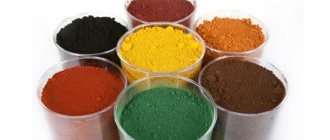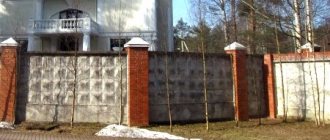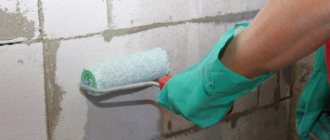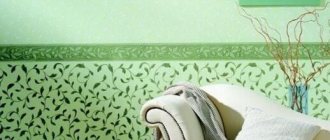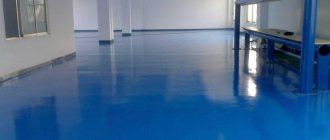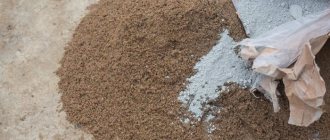Preparation
Porosity of the material is the main problem that needs to be solved. The first thing that comes to mind is plastering the walls: with its help you can achieve the evenness of the future surface. For leveling, different types of solution are used:
- Cement-sand plasters and their derivatives (lime, sand-lime);
- Gypsum compositions for treating the internal surface.
Before plastering the wall, it is carefully primed with a special deep penetration compound to reduce material consumption. It is recommended to make 2-3 passes with soil.
After applying the base layer of preparation, the finished wall is again treated with primer before finishing painting.
How to paint
Any special paints are suitable for painting the prepared surface: facade paints, for interior work. They can be made on the basis of acrylic, silicates, silicone. The technology for applying emulsions is standard:
- Painting begins from the window towards the door. You should not start work from the middle of the wall, as this can result in uneven paint transitions between working areas.
- The paint is applied with a roller on a long handle in the upward direction using stretching movements.
- To obtain the desired result, apply 2-3 layers of paint.
Non-standard approach
The classic algorithm is not always appropriate; perhaps painting the walls is a temporary measure to create the appearance of the house. In this case, how to paint foam blocks without plaster?
If plastering of the surface is not expected, you need to understand: the porosity of the foam block contributes to high moisture absorption. Thus, paint consumption can exceed 5 times compared to coating a plastered surface.
A mandatory step will be priming the walls with several layers of deep penetration primer. 2-3 applications will reduce the absorbency of the material, so you can reduce the cost of the dye.
Is it possible to paint foam blocks with putty?
Another interesting way to finish a foam block is puttying. The plastered surface is treated with special compounds to make it more even. Most often, mixtures have a white color, which is convenient to apply under paint - it will not change or show through the shade of the base.
Sometimes thrifty owners do without plastering and immediately use putty. This option is acceptable for temporary covering of the facade - without the main leveling layer, the appearance of the house quickly loses its original appearance. A thin layer of putty is applied to the main wall, then paint.
Modern designers and craftsmen manage to kill two birds with one stone - when mixing the putty mixture, they add a construction color to the solution. This method is rare, but it does happen:
- The substance does not change the characteristics of the material and does not affect its solubility;
- The use of white plaster with color allows you to reduce work time by combining two stages.
True, there are several nuances of the technique:
- The solution must be thoroughly mixed. For the process it is necessary to use a construction mixer.
- To cover a large area, careful selection of shade is required: the solution is prepared in small batches, each shade must match the previous one so that there are no color transitions.
Puttying with a white or tinted mixture without laying a plaster layer or immediately painting the foam block is only suitable for creating a temporary external appearance of the house. Over time, the coating wears off, washes off and is absorbed. After 3-4 years, it is necessary to install a new facing layer.
Source
External and internal finishing of aerated concrete
Normal removal of water vapor requires a different approach to interior and exterior decoration. First of all, it is necessary to separate these procedures by purpose. Interior decoration is carried out mainly for decorative purposes. It is needed to level the surface of aerated concrete, eliminate minor flaws and fill potholes that arise during the laying process. In addition, finishing work is needed to strengthen the seams (vertical), which often turn out to be poorly filled with the adhesive mixture.
Exterior finishing combines decorative and protective functions. For aerated concrete, it is important to ensure cut-off from contact with rainwater, therefore, most often they use cladding - sheet or prefabricated fabric. However, tradition dictates that a layer of plaster be applied on top of which painting is done. Plaster is needed to strengthen the surface - aerated concrete is quite fragile and does not withstand mechanical stress well. The layer of plaster forms a durable cocoon, however, the process of removing steam from aerated concrete should not be interrupted. Therefore, when choosing a composition for exterior finishing, one must take into account the need to dry the walls and use only materials with maximum permeability.
Painting gas silicate blocks without preliminary preparation is not recommended. However, this applies only to the decorative qualities of the surface and does not affect the protective properties of the coating. Despite the fact that aerated concrete has smooth and geometrically precise edges, their surface is not intended for direct painting. In addition, the presence of seams spoils the plane of the facade and requires the use of leveling compounds.
The main rule should be the order of execution of interior and exterior finishing. First, the interior finishing is done, and only after that the exterior is completed. This sequence follows from the SNiP rule regarding increasing the permeability of aerated concrete walls for water vapor. If you break the rule and first finish the aerated concrete from the outside, you can create a barrier to moisture in the material, which will lead to undesirable consequences.
What paint is suitable for foam blocks
Foam blocks have become increasingly used in construction due to their high performance qualities. The erected walls have an unattractive appearance - gray porous stone. The exterior decoration of a building made of foam blocks is of particular importance due to the structure of cellular concrete.
To decorate the facade, facing bricks, facade panels, siding and other options are used. Paint for foam blocks is an inexpensive and effective way to give walls a unique look.
Hanging structures
- plasterboard sheets;
- clapboard or block house;
- decorative panels, for example MDF.
Finishing foam concrete walls with plasterboard.
All these designs have in common that guides are fixed to the foam block wall, on which the wall panels are then fixed, as a result of which some gap remains between the wall and the finish for ventilation. You can sew slabs of mineral wool or expanded polystyrene into this space for additional heat and sound insulation.
Features of the material influencing the choice of wall decoration
Foam blocks do not have high strength, they absorb water well, all this leads to destruction. When choosing possible finishing options, you should take into account a number of factors given in the table.
| No. | Characteristics of foam blocks | Finishing features |
| 1 | Strength | The selected type of finish must withstand mechanical and impact impacts. |
| 2 | Frost resistance | Do not deteriorate and maintain its original appearance from many cycles of freezing and thawing. |
| 3 | Vapor permeability | The finishing material must not interfere with air filtration. |
| 4 | Water permeability | Reliable protection against moisture ingress. |
Classification of facade paints
To decorate external walls, façade paint for foam blocks is used. You can find several types of paint on sale:
- structural, forming a relief coating;
- textured with reinforcing fibers;
- water-dispersed;
- rubber.
Textured and structural material has the following technical characteristics:
- No additional wall treatment is required; façade paints are easy to apply and roll out with a roller.
- Getting the desired color using a tint.
- Forms a matte relief coating.
- Hides minor surface defects.
- Has good vapor permeability.
- Textured paint with reinforcing fibers forms a coating that prevents cracks from forming.
- There is no unpleasant odor.
Painting walls made of foam blocks can be done without preliminary preparation, you just need to clean it from dust.
Water-dispersion paint “Tex” is suitable for painting external and internal surfaces of foam blocks. The surface must be coated several times. The painted base will “breathe”. It is convenient to apply the paint composition with a roller or brush.
Structural water-dispersion paint “Gasbetonbeschichtung RD10” has an acrylic base. Used for painting external and internal surfaces. The fine-grained structure is suitable for covering a porous base, which means it is ideal for sand concrete. The material has the following performance properties:
- high resistance to climatic precipitation;
- ideal for covering porous surfaces;
- high protection against shock and mechanical impacts;
- use for design decoration;
- good moisture resistance and vapor permeability;
- long service life - up to 20 years.
VD paint can be used for mineral bases or under synthetic plaster.
Rubber paint “Super Decor” is ideal for foam blocks. After painting, a velvety coating is formed. The use of paint and varnish material will allow:
- protect and strengthen walls;
- provide oxygen access;
- do not allow moisture to pass through;
- wash the surface with cleaning solutions;
- service life – up to 10 years.
Foam blocks and plaster
Foam blocks made by casting are very smooth, so they must first be sanded, and also used for work with mixtures with a high adhesion rate.
Unique properties of foam concrete:
- Durable material
- Highly resistant to temperature changes
- Has excellent heat conservation and sound absorption
- It has a minimal shrinkage rate
- Lightweight building material, therefore convenient to use and transport
- Has good water repellency
- Easy to process and cladding
Attention: Remember that if you do not follow the technology for applying the plaster mixture, you risk reducing to zero all the positive properties of this unique building material.
Features of surface preparation for painting
It is recommended to paint external walls at a temperature of +20 degrees. It is not advisable to carry out work early in the morning. During this period, the façade of the building is wet from dew. The entire technological process can be divided into several stages:
- Preparing the base. The walls are cleaned of dust and dirt. Deep seams and irregularities are sealed. Cracks around door and window openings are smoothed out.
- Primer of walls. Treatment is carried out with anti-corrosion and antiseptic solutions. If the surface is coated with a primer, the paint will lie smoother and good adhesion to sand concrete will be ensured.
- Painting the base with paint and varnish composition.
Foam block walls: how to plaster correctly?
As you know, plaster is a finishing layer obtained by applying a liquid construction mixture to the surface with its subsequent hardening. This word is also used to refer to the mixture itself. Plastering any surface is carried out according to a standard scheme, but foam block plastering has its own distinctive features that should not be overlooked during construction work.
When can you plaster walls?
You cannot plaster the walls immediately after building a house. A new building should last at least three to four months, ideally a year. During this time, the walls will shrink.
The technology for working indoors and outdoors is the same.
External work is carried out at temperatures from plus five to thirty degrees in dry weather. For plastering foam block walls from the inside and indoor partitions, the weather is not a significant factor.
How to prepare the walls?
Foam block has poor adhesive properties, so the base for plaster requires preparation. You can do this in two ways:
- apply primer;
- attach fine mesh.
Tool
To carry out the work you will need tools and building materials:
- construction spatulas of different sizes and purposes;
- for painting rollers and brushes;
- painting cuvette;
- sandpaper with fine and coarse grains;
- construction hammer;
- pliers;
- putty composition;
- paint and varnish products.
Depending on the condition of the external walls of the facility, you may need:
- degreasing solution;
- to eliminate cracks and seal seams - gypsum;
- masking tape;
- stain removers for plaster.
Dyeing technology
You can paint concrete with your own hands quite quickly and easily.
The presented step-by-step instructions stipulate how to do this correctly:
- The first step is to completely get rid of the old paintwork, if any. Use a stiff wire brush or scraper to clean the finish. This work is quite long and labor-intensive, but the quality of the coating created depends on it;
- Next, you should remove accumulated dust, dirt, oil and grease stains from the surface. Oil stains can be removed using an orthophosphorus solution. After this cleaning, you must wait until the concrete base is completely dry and only then proceed to the next stage of work;
Advice. the paint may have a different shade in different areas
Note! The drying time of each layer depends on the quality of the paint itself chosen to create the coating.
If you need to mechanically process a concrete surface, whether painted or not, you can use processing methods such as cutting reinforced concrete with diamond wheels and diamond drilling holes in concrete.
Set of tools
When thinking about how to paint a concrete wall, ceiling or other surface, you need to clearly determine which tool will be used to carry out this procedure.
To carry out this work, a special tool is used that allows you to perform the work quickly and comfortably:
- A specialized paint brush that allows you to create high-quality coverage in corners and other hard-to-reach areas of the surface. How to paint a picture frame from a ceiling plinth? Such brushes can be thin or wide and have bristles of varying quality and length;
- Rollers for applying paint. To produce dyeing, it is recommended to purchase several rollers of various sizes and widths. You can also buy replacement attachments that will come in handy during your work. Depending on what surfaces will be painted, you can choose rollers with handles of different lengths;
Note! If you are thinking about how to paint a concrete ceiling, then you should use rollers with telescopic handles, which are very convenient for applying a layer of paint at different heights.
- Ditches and containers for paint. In such containers, the paint can be tinted or diluted before being applied to concrete;
- Specialized painting film, which is used to protect areas that do not need painting;
- Safety glasses, a mask, and gloves help protect the skin and mucous membranes from the aggressive effects of the dye;
- A respirator will provide respiratory protection from the negative effects of paints.
Advice. In order to move on a concrete floor that has already been painted with paint, without fear of spoiling the created coating, it is recommended to use studded soles.
Painting sequence
At the first stage of work, the walls are cleaned of grease stains, rust, dust and dirt. Identifies and eliminates foundation defects. To complete the work, you will need gypsum and putty to remove cracks and eliminate deficiencies in the foam concrete masonry.
After this, you can begin priming the surface. A roller and brushes will be useful for this work. The primer can be applied with a special sprayer. Material consumption is indicated on the packaging by the manufacturer or instructions.
Priming foam block walls will help reduce paint consumption.
After the walls have dried, they begin directly to painting. When performing work, it is recommended to follow the following sequence:
- Applying paint should begin on the corners and edges of the building facade, under door and window openings. First, hard-to-reach areas of the exterior walls of the facility are painted.
- Then the entire base is painted.
- To achieve the desired result, you will have to apply 2-3 layers of paint and varnish composition.
Painting external walls made of foam blocks is possible and is an economical surface finishing option.
How to plaster foam block walls
External walls are most susceptible to external atmospheric influences: dust, gases, temperature changes, precipitation. For this reason, plastering of external walls is mandatory. You need to choose only mixtures intended for outdoor use. It is possible to use universal formulations.
- cleaning the wall, grouting from dirt, removing rust stains;
- degreasing the surface;
- priming in two or three layers;
- installation of reinforcing mesh;
- plastering;
- padding;
- finishing.
The thickness of the plaster layer depends on the slope of the building. If it does not exceed 5 millimeters, then 2 layers are applied. Priming is required between layers of plaster.
If the deviation is more than 5 millimeters, beacons are used. The first layer of plaster is applied to level the surface, after which the fiberglass reinforcing mesh is laid. To apply the second layer, you do not need to wait for the first to dry. Half an hour after applying the second layer, the beacons are removed. The resulting depressions are covered with plaster.
Features of paint for aerated concrete
Painting is a simple and economical way to finish a facade. Today's market for paints and varnishes is represented by a variety of coloring compositions. Which of them are suitable for aerated concrete and is it possible to paint aerated concrete blocks without plaster? Let's figure it out.
Is it possible to paint aerated concrete blocks without plaster?
Aerated block is a building material that requires mandatory finishing. This is due to the high hygroscopicity of cellular concrete. Therefore, finishing for aerated block walls must meet three basic requirements:
- prevent street moisture from penetrating into the concrete structure;
- provide the necessary vapor permeability so that the walls “breathe”;
- ensure normal operation of the building.
Facade plaster fully meets these requirements. Aerated concrete paint for exterior use is applied on top of the plaster layer, which gives the wall the desired color and texture. Is it possible to paint aerated concrete without plaster? It is possible if the selected paint for aerated concrete meets the specified requirements, that is, it forms a vapor-permeable, moisture-resistant layer on the surface. Not all paints and varnishes have such properties. So how to paint aerated concrete blocks on the outside without plaster, and what paint should you use to plaster the walls? Let's look at different types of paints in more detail.
Types of paint for aerated concrete
From a chemical point of view, paint is a mixture of pigments, fillers and binders. Pigments are used to give paintwork materials the required color and special properties: anti-corrosion, resistance to ultraviolet radiation and aggressive environments.
Base compounds in accordance with GOST R 56585-2015 are used as pigments. But different fillers and binders are used in paints. The physical and operational characteristics of paint coatings depend on their properties. Types of paints depending on composition:
Water soluble
This is a façade paint for aerated concrete, which contains a polymer filler and the solvent is water. Additionally, plasticizers, modifiers, and driers (hardeners) are added to the composition. The material creates a sealed layer on the surface to be painted that does not allow moisture to pass through, which means it is suitable for painting aerated concrete walls without plaster. This is an excellent choice when you need to paint aerated concrete cheaply: the paint is applied with ordinary painting tools, and no preliminary primer is required.
- environmental friendliness - does not contain hazardous compounds;
- Easy to apply - no protective suit required;
- quick drying at temperatures +20°C and above;
- thin layer - one layer is enough for painting;
- Service life before coating renewal is up to 3 years.
- cannot be used at temperatures below +15°C and high air humidity;
- requires regular updating.
Silicate
They are produced on the basis of silicate - liquid glass. They protect surfaces well from ultraviolet radiation, temperature changes, and moisture. Silicate coatings are not intended for application to concrete, stone, and ceramic surfaces due to low adhesion. Therefore, painting aerated concrete with silicate paint without prior plastering is impossible. Before applying silicate paint, the plaster must be treated with a silicone primer. Only in this case will silicone paint for aerated concrete stick to the surface and perform its intended functions.
- protection of the facade from climatic factors;
- bright, rich, deep color;
- self-cleaning in the rain;
- service life before coating renewal is from 5 years.
- applied only to plaster;
- require the use of silicone primer;
- contain alkali - a protective suit is required when applying;
- poorly cleaned from the surface.
Oily
An outdated type of coatings based on drying oil. Turpentine, benzene or white alcohol are used as a diluent. Oil-based paints are quite toxic, so they are currently used primarily for outdoor use. The material is applied to cellular concrete only after preliminary priming. Painting aerated concrete without plaster on the outside of the house with oil paint is possible, but not advisable due to the large number of disadvantages.
- painted aerated concrete takes a long time to dry;
- when dried, toxins and a characteristic odor are released;
- form streaks on the wall;
- light colors turn yellow over time;
- service life before updating is several seasons.
Acrylic
Acrylic resin is used as a binder in acrylic coatings. On the surface to be painted, the material forms a dense film that does not allow moisture to pass through, but ensures unhindered air circulation. If you are deciding how to paint the outside of aerated concrete blocks, then vapor-permeable paint for aerated concrete based on acrylates is a good option. Acrylic paints have excellent adhesion to aerated concrete and can be applied without plaster or primer to a cleaned surface. The structure of the coating material is highly elastic, which makes it well adapted to the specifics of the aerated block.
- tinted in any color from the RAL catalogue;
- high resistance to ultraviolet radiation;
- highest mechanical resistance;
- cover cracks in aerated concrete up to 1.5 mm deep;
- frost resistance and resistance to temperature changes;
- protect the surface from corrosion, which is important for reinforced aerated concrete blocks;
- service life before coating renewal is up to 5 years.
- can only be applied to dry surfaces;
- relatively high price.
Polymer
The binder in these coloring compositions is an emulsified polymer-based resin. Polymer coatings form a water-repellent film on the surface of cellular concrete, which at the same time perfectly allows air to pass through. Polymer facade paint for aerated blocks can be applied both to fresh plaster and directly to the aerated block. In this case, the surface does not have to be completely dry, as acrylic paints require. Polymer paint compositions can also be applied over the old layer of paint, which is especially important if the house has been repainted many times. Polymer paint can be applied at temperatures down to -10°C, so this option is suitable for those who are thinking about how to paint aerated concrete blocks outside for the winter.
- create a durable glossy finish;
- give the surface a prestigious look;
- resistant to all climatic factors;
- resistant to aggressive environments;
- self-clean in the rain, repel dirt;
- applied at temperatures from +35 to -10°C;
- fill cracks up to 5 mm deep in the structure of the aerated block;
- service life before coating renewal is up to 7 years.
- high price;
- decent consumption per 1 m² of aerated block wall.
How to choose the optimal type of coating
When choosing paint, you need to take into account its performance qualities and compare them with the purpose and expected service life of the coating. For example, if finishing can only be done while the house is shrinking and is required for no more than 2-3 years. Or final finishing is carried out when maximum service life is required while maintaining performance qualities.
In addition, it is necessary to find out whether it is possible to paint aerated concrete blocks without plaster, and whether this option is allowed for this material. Most paints can be applied directly, but there are exceptions (eg silicate materials). Another factor that needs to be taken into account is material consumption. Some types of paint have high viscosity, which allows you to seal small cracks or potholes in aerated concrete. However, the consumption of thick material is very high, which will require large financial investments. You can use textured paint that creates a three-dimensional relief on the surface. This is a specialized coating used on both interior and exterior surfaces.
see also
Comments 62
Just what you need. It would be nice to paint it like this.
You can use Hyperdesmo polyurethane paint. It will protect from moisture and cover microcracks if they appear. It’s better to take either white or gray - it will last longer (UV reflects).
Now rubber paint has appeared in stores. Take it and paint it, as I understand it, it has good adhesion and thanks to its sponge-like structure, I think it will saturate it very well and protect it from moisture.
Penetrating primer + concrete paint, but don’t forget to paint both the outside and the inside, i.e. if possible, the entire protruding surface of the block.
I plastered it first, but, on the other hand, the blocks were laid out beautifully, very beautiful




